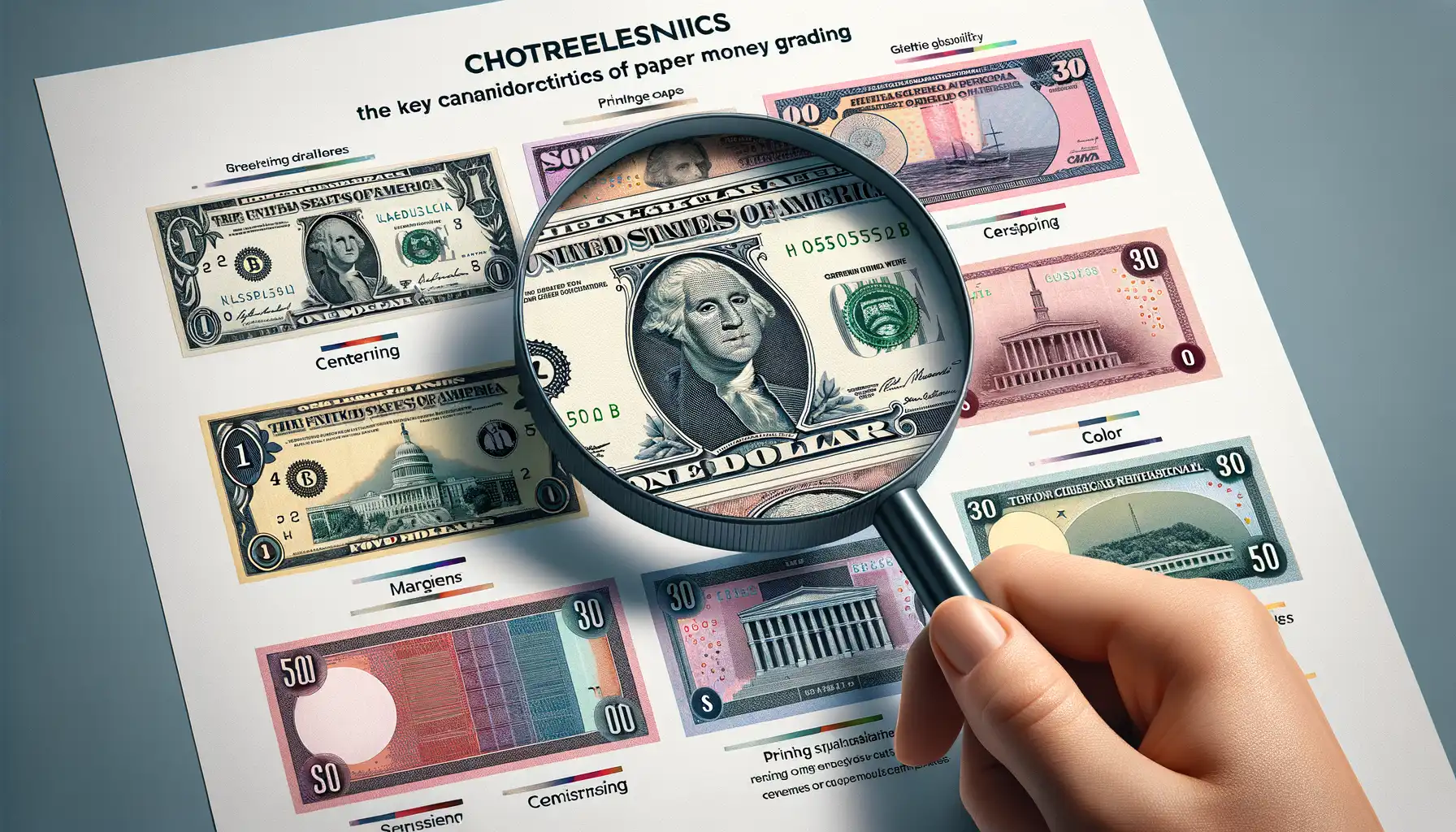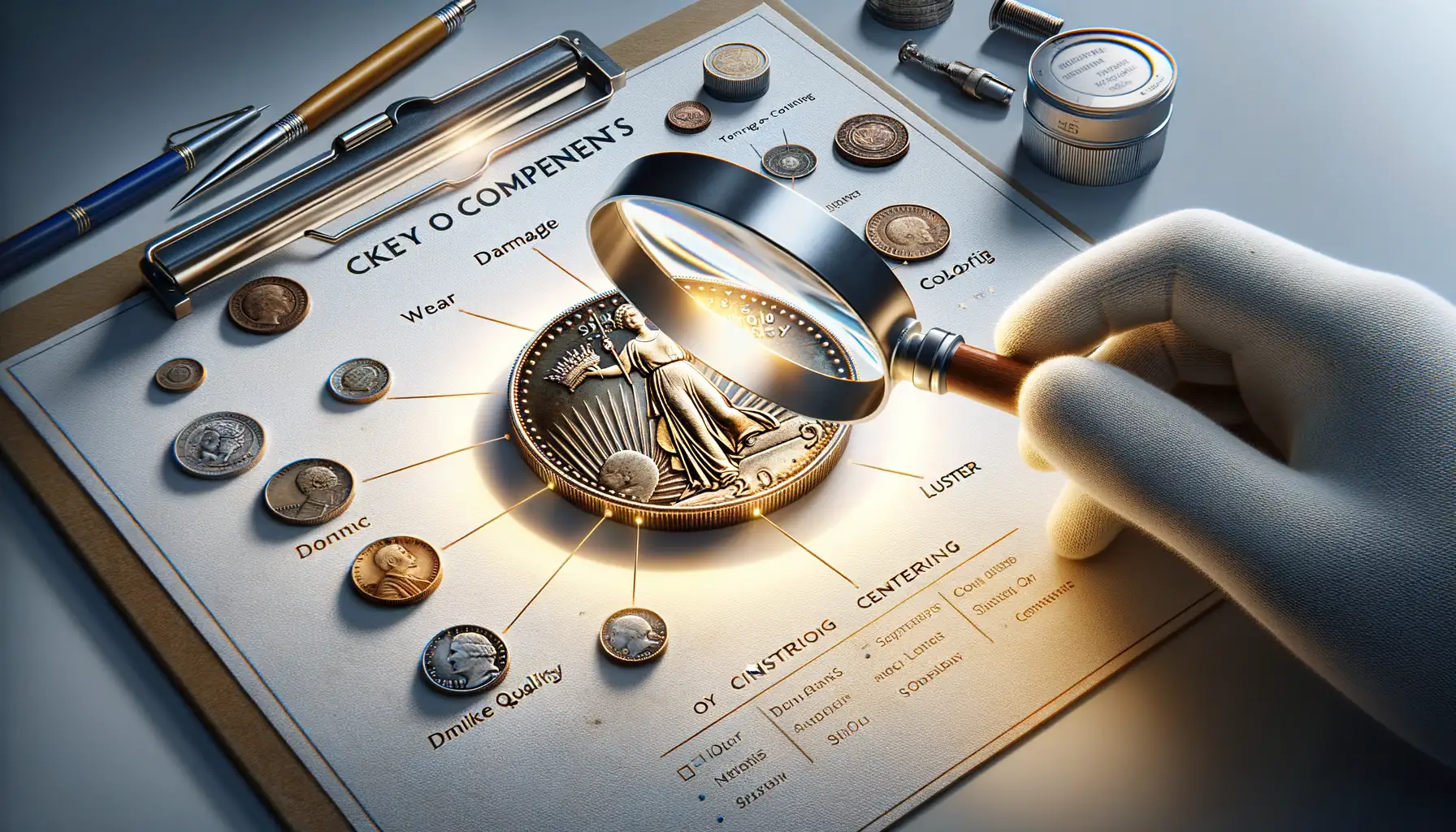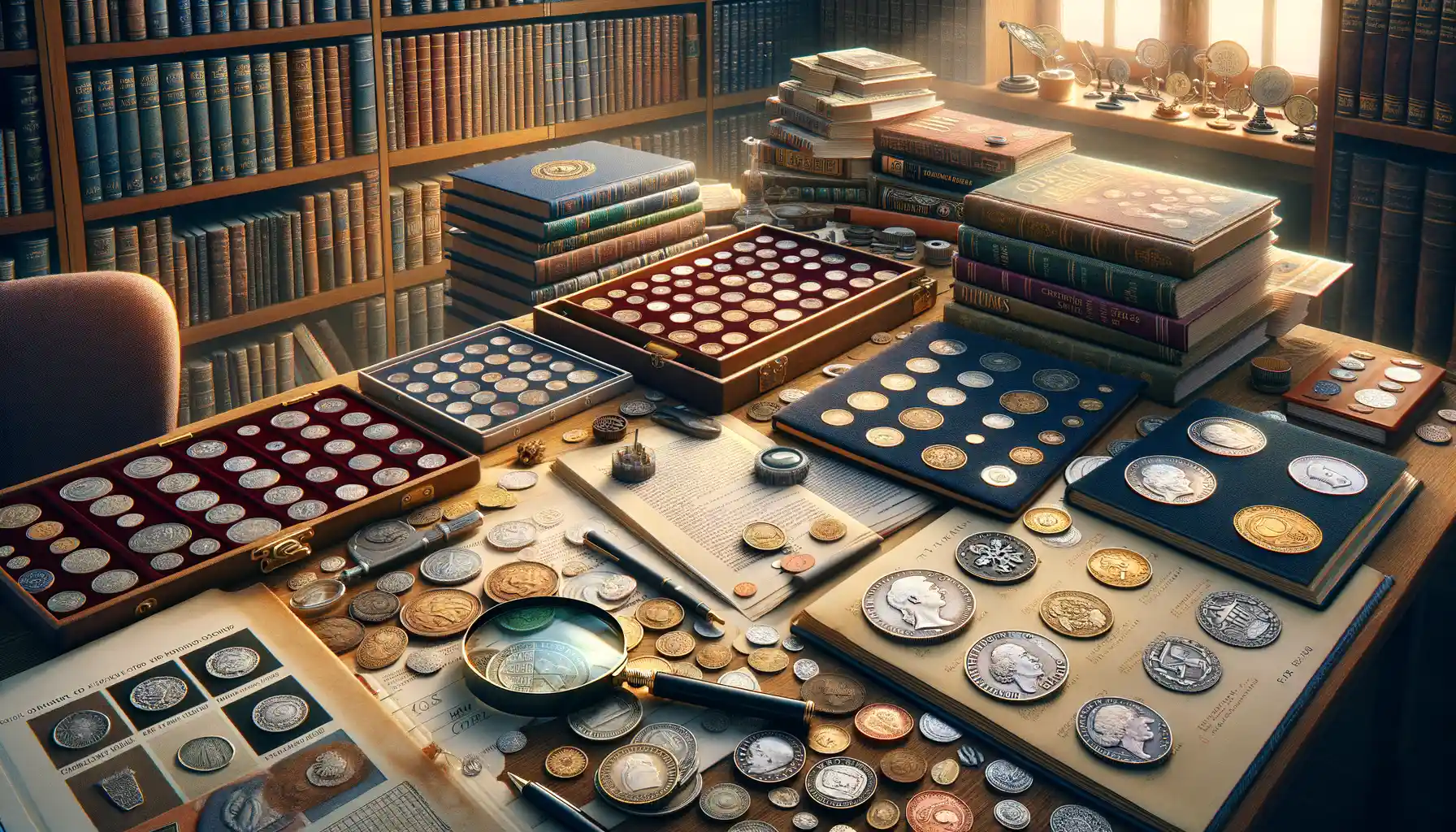The Basics of Grading Paper Money and Coins
Understanding the Language of Grades
Grading paper money and coins is like learning a new language—each crease, scratch, and gleam tells a story. But how do you decipher these tales? At its core, grading is about evaluating the condition of an item, but don’t let that simple definition fool you. It’s an art form wrapped in science, with precision and passion in every step.
For paper money, it’s all about the details: Is there crispness in the fold? Are the colors bold or faded like an old photograph? Then there’s the hunt for imperfections—creases, tears, and stains can drop a note’s grade faster than a spilled cup of coffee on a collector’s table.
Coins, on the other hand, shine (hopefully—pun intended) in their own way. You’ll be analyzing their luster, strike quality, and, yes, those inevitable marks from circulating through countless hands.
- Is the coin still radiating its original brilliance?
- Do the edges scream sharpness or have they worn into a soft blur?
Both coins and bills speak volumes with their condition—it’s simply up to you to learn their vocabulary!
Key Characteristics of Paper Money Grading

Understanding the Heart of Paper Money Grading
Grading paper money isn’t just about scrutinizing an old bill under a magnifying glass—it’s an art and science that requires sharp focus and a touch of reverence for history. Unlike coins, which can survive a tumble or two, paper notes carry their fragility like a badge of honor. Their condition speaks volumes.
When evaluating paper currency, graders focus on these soul-defining traits:
- Centering: A bill’s design must be well-aligned. Misaligned borders or crooked prints can instantly drop its desirability.
- Color Vibrancy: Faded hues signal wear, while crisp, vivid colors often mean the note has been pampered over the years.
- Folds and Creases: Every fold tells a story—but too many stories can hurt the grade.
- Paper Integrity: Does it feel crisp? Or worse, do you spot any splits, tears, or repairs?
A Closer Look at Unique Features
Now, let’s dive into the quirks that make paper money grading a world of its own. Think about serial numbers—they’re more than just digits! Notes with patterns like “123456” or unique errors—like an upside-down seal—are treasures that demand attention. Even tiny pinholes or watermarks can speak volumes about a bill’s history and authenticity.
Essential Factors in Coin Grading

Why Every Detail Counts
Coin grading isn’t just a science; it’s an art form, a meticulous dance of precision and passion. When grading, collectors look at every curve, edge, and surface under bright lights – because every little detail matters more than you’d think.
The first and most obvious factor? *Condition.* Coins live extraordinary lives—some endure centuries rattling in treasure chests or sitting forgotten in pocket linings. The fewer scratches (or as numismatists call them, “bag marks”), the higher the grade. But don’t stop at what meets the eye—shine a light on *luster*. This radiant glow is like the coin’s fingerprint, unique and irreplaceable, and determines its visual charm.
Then, there’s the all-important *strike quality*. A weak strike can make a coin appear blurry, even if it’s fresh from the mint. Is every design crisp, down to the smallest star or feather? That’s the big question.
- Minting errors: Far from flaws, these unique quirks—like doubled die imprints—can skyrocket a coin’s value.
- Eye appeal: Does a coin grab your attention instantly or leave you unimpressed? Sometimes, beauty really is in the eye of the beholder!
Ultimately, grading coins is about respect for history—a careful study of the stories each piece carries.
Differences in the Grading Process and Standards

The Grading Journey: Banknotes vs. Coins
When it comes to grading, the processes for paper money and coins are two entirely different animals! Imagine comparing delicate lace to sturdy leather—each requires its own unique touch.
For paper money, graders focus on finesse and preservation. The smallest tear or a faint fold can significantly impact its grade. Lighting is critical here, as every flicker of a crease or missing security feature tells a story about its history. And then there’s centering—a symphony of perfectly balanced margins that makes collectors swoon.
Grading coins, however, is like examining miniature sculptures. It’s all about the blend of wear, luster, and tiny imperfections—the “bag marks” or scratches they pick up during circulation or storage. Don’t forget toning, either. It’s less about damage and more about those breathtaking hues coins develop naturally over decades, sometimes looking like a sunrise trapped in metal.
Standards That Set Them Apart
The standards? Oh, they’re worlds apart too. Imagine these checkpoints:
- For banknotes: Crispness, paper quality, ink saturation, watermarks—more fragile than your grandmother’s china.
- For coins: Strike sharpness, surface brilliance, and, let’s be honest… those fascinating mint errors collectors love.
It’s an art and a science—different in every sense, but equally thrilling.
Common Errors and Tips for Accurate Grading

Spotting Pitfalls in the Grading Maze
Grading paper money or coins might seem like an exact science, but let’s face it – even seasoned collectors hit a few bumps along the way. The biggest culprit? Overconfidence. It’s easy to think you’ve got the hang of it after a few attempts, only to realize your “near perfect” note is riddled with folds you missed under poor lighting. The devil, as they say, hides in the details.
Two huge slip-ups people make: relying solely on memory and underestimating proper tools. A naked eye might miss the fine wear on a coin’s rim or the subtle creases on a banknote’s edge. Always keep a trusty loupe and proper light by your side; they’re your grading BFFs.
- Tip: Practice patience! A rushed grade can cost you accuracy – and value.
- Watch out: Paper money is often more delicate than coins. Handle with extra care.
The Emotional Side of Grading
Let’s talk attachment. You pick up a shiny coin or a vintage banknote, and suddenly, you’re smitten. But here’s the hard truth: emotions can cloud judgment. That crisp bill from your grandfather’s attic? It might feel priceless, but that crease running through its center is calling the shots. Stay objective—your collection will thank you!




